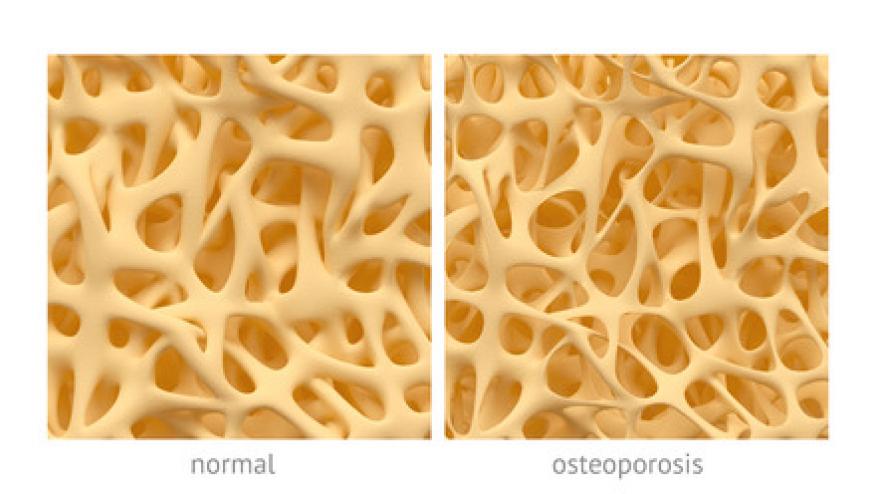2022 New ACR Guidance on Glucocorticoid-Induced Osteoporosis (GIOP) Save

The ACR has updated this guideline and includes recommendations on abaloparatide (PTHrP) and romosozumab, which are newly available since the ACR’s 2017 GIOP guideline.
It also addresses sequential therapy, which was not addressed in the past. Patients need to understand that when beginning a course of denosumab (DEN), teriparatide (PTH), abaloparatide (PTHrP), or romosozumab, they will need additional therapy after these drugs are discontinued.
Recommendations for sequential therapies are based in part on some study designs, longterm follow up studies, and new clinical trials. Patients completing a course of denosumab should transition to 1-2 years of a bisphosphonate, or depending on the clinical scenario, transition to PTH, PTHrP, or romosozumab. Patients completing a course of PTH, PTHrP, or romosozumab need to transition to a bisphosphonate or denosumab; patients completing a course of PTH/PTHrP may transition to romosozumab followed by a bisphosphonate.
Stopping denosumab without a transition to another therapy can result in vertebral compression fractures and bone loss. Discontinuation of denosumab after two or more doses has been associated with rapid bone loss and development of new vertebral compression fractures as soon as 7-9 months after the last dose. As such, bisphosphonate therapy is recommended beginning at 6-7 months after the last dose of denosumab.
The precise timing, dose, and duration of bisphosphonate use after denosumab cessation is under study, but treatment for a least 1 year seems prudent, until additional research is available. Stopping PTH/PTHrP without transition to another therapy can also result in rapid bone loss and new fractures, which can be prevented by institution of oral or IV bisphosphonates, denosumab, or romosozumab. Stopping romosozumab without transition to another therapy can result in bone loss, which can be prevented by the institution of oral or IV bisphosphonates or denosumab.
Like the 2017 guideline, patients should be risk-stratified as being at low, moderate, or high risk of fracture (FRAX® 10-year probability of major osteoporotic fracture < 10 %,10-19%, or ≥ 20% respectively). These cut points were used to stratify PICO (population/intervention/comparator/outcome) questions and weigh potential benefits versus harms when considering osteoporosis therapy.
A panel of adult and pediatric rheumatologists and endocrinologists updated the systematic literature review and included currently available medications for the prevention and treatment of osteoporosis. A patient panel was included in this update project. A strong recommendation was made to use oral bisphosphonates for anyone receiving long-term glucocorticoids (GCs) at high risk for fracture. For GC-treated adults at moderate to high risk of fracture, oral or intravenous bisphosphonates, PTH/PTHrP, and denosumab are preferred agents depending on patient and physician preferences. Selective estrogen receptor modulators (SERMs) and romosozumab may be used in selected patients after careful consideration of potential harms including thrombosis, stroke, and cardiovascular events.
Sequential Treatments Recommended When Initial OP Therapy and GC are Discontinued and at Low or Moderate Risk
Initial OP Therapy
- Oral/IV Bisphosphonate
- SERM
- OP therapy PTH/PTHrP (subsequent Rx: Oral or IV Bisphosphonate or denosumab followed by Bisphosphonate)
- Denosumab (subsequent Oral or IV Bisphosphonate)
- Romosozumab (subsequent Oral or IV Bisphosphonate or denosumab followed by Bisphosphonate)
Sequential Treatments Recommended When Initial OP Therapy and GC are Discontinued and Patient Remains High Risk
- Continue current therapy or switch to IV Bisphosphonate, denosumab, PTH/PTHrP, SERM, or romosozumab
Osteoporosis Medications for Patients with Chronic Kidney Disease or Following Renal Transplant
Bisphosphonates should generally not be used in patients with an eGFR < 35 ml/min. When eGFR is < 35 ml/min, the risk of renal osteodystrophy, including adynamic bone disease, osteomalacia, osteitis fibrosa cystica, and mixed uremic osteodystrophy, is increased. As such, metabolic bone disease expert evaluation for chronic kidney disease-mineral and bone disorder (CKD-MBD) is conditionally recommended to exclude these conditions. Once excluded, no dose adjustment is needed when prescribing denosumab, PTH/PTHrP, or romosozumab. T
his summary was approved by the ACR Board of Directors on August 13, 2022. These recommendations are included in a full manuscript, which will be submitted for publication in Arthritis & Rheumatology and Arthritis Care and Research.
Join The Discussion
To the best of my knowledge there is no publication about romisozumab or abaloparatide in GIO









If you are a health practitioner, you may Login/Register to comment.
Due to the nature of these comment forums, only health practitioners are allowed to comment at this time.